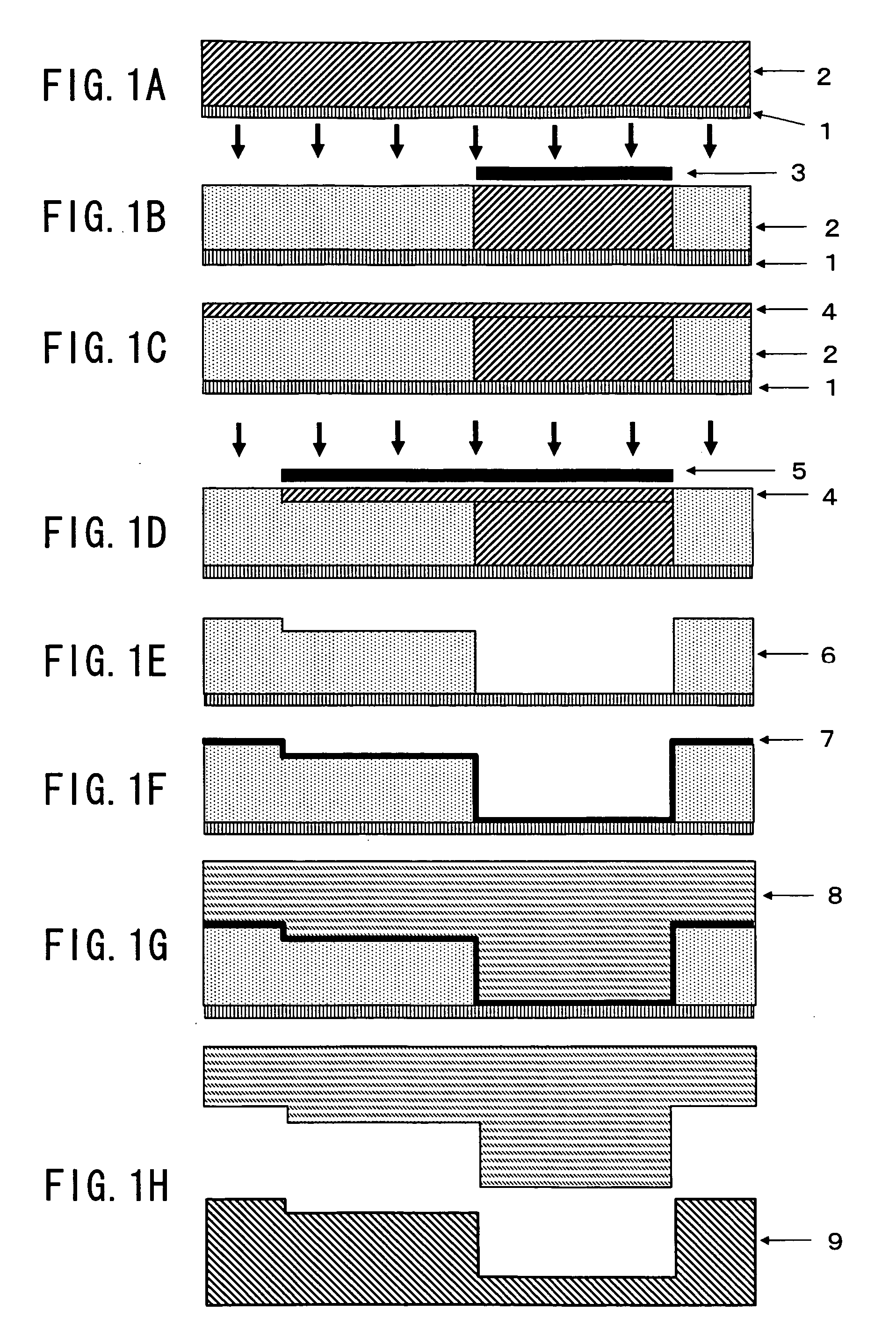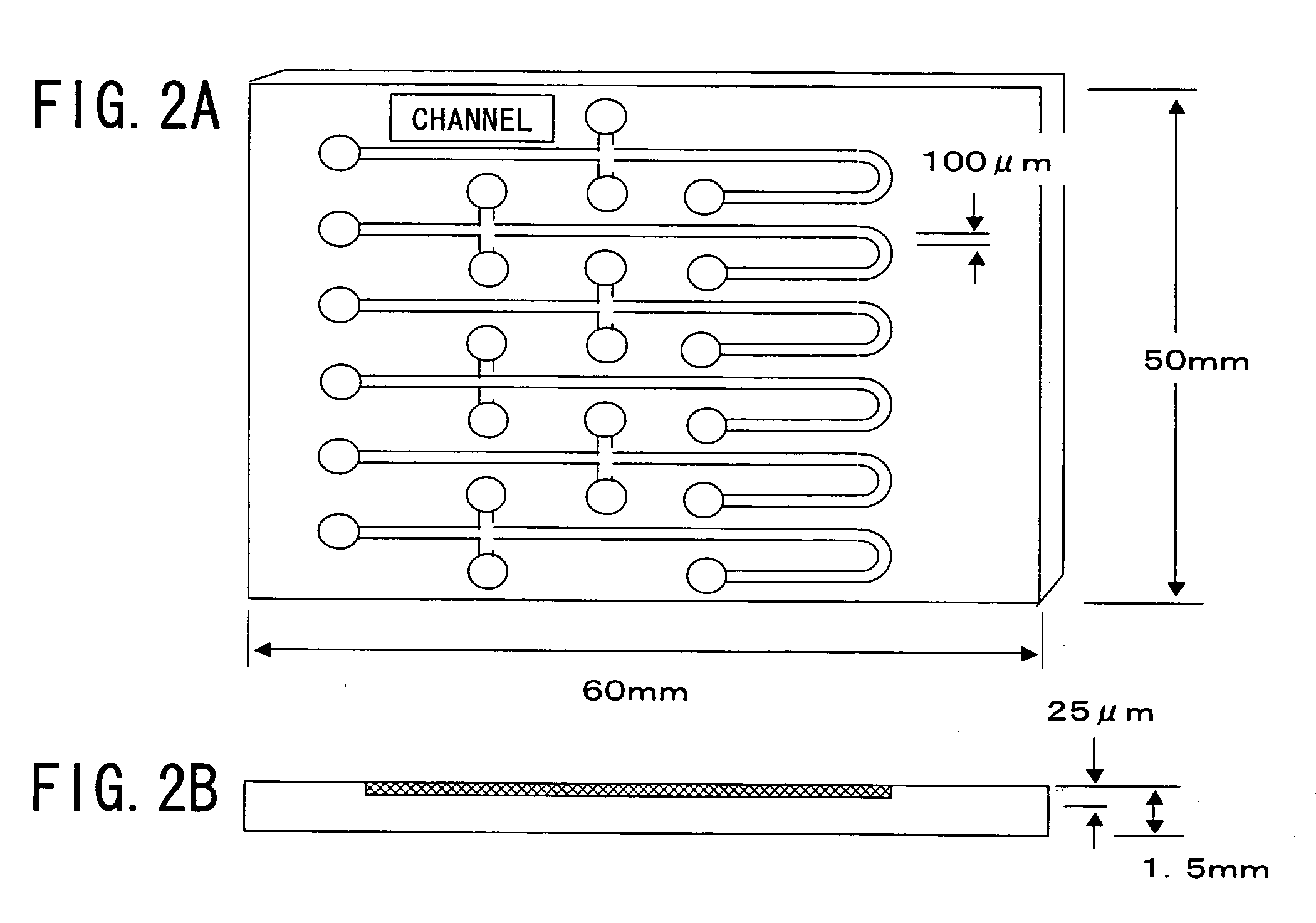Resin molded product production process, metal structure production process, and resin molded product
- Summary
- Abstract
- Description
- Claims
- Application Information
AI Technical Summary
Benefits of technology
Problems solved by technology
Method used
Image
Examples
embodiment 1
cl Embodiment 1
[0087] Referring first to FIG. 1A to 1H, the production process of a resin molded product according to an embodiment of the present invention is shown. This embodiment uses known production equipment, and its detailed explanation is omitted.
[0088] A production process according to this embodiment will be explained hereinafter with reference to FIG. 1A to 1H. FIG. 1A to 1H show a case that uses chemical amplification negative resist. This embodiment forms a resist pattern by the following steps:
[0089] (i) Formation of the first resist layer on a substrate (FIG. 1A)
[0090] (ii) Positioning of the substrate and a mask A (FIG. 1B)
[0091] (iii) Exposure of the first resist layer, with the mask A (FIG. 1B)
[0092] (iv) Heat treatment of the first resist layer (FIG. 1B)
[0093] (v) Formation of the second resist layer on the first resist layer (FIG. 1C)
[0094] (vi) Positioning of the substrate and the mask B (FIG. 1D)
[0095] (vii) Exposure of the second resist layer, with the mask B...
example 1
Production of a Molded Product Having a Channel
[0163] According to the molded product production process shown in FIG. 1A to 1H, resist coating was repeated two times to form the first resist layer and then exposure and heat-treatment were performed thereon. Further, the resist coating was performed once again to form the second resist layer, and then the exposure and the heat-treatment were performed thereon. A resin molded product, as shown in FIGS. 3A and 3B, having a substrate with 75 mm in width, 50 mm in length, and 1.5 mm in thickness on which a channel with 50 .mu.m and 200 .mu.m in heights was created was thereby produced.
example 2
Production of a Molded Product Having a Channel
[0164] According to the molded product production process shown in FIG. 1A to 1H, resist coating was repeated three times to form the first resist layer and then exposure and heat-treatment were performed thereon. Further, the resist coating was performed once again to form the second resist layer, and then the exposure and the heat-treatment were performed thereon. A resin molded product, as shown in FIGS. 4A and 4B, having a substrate with 75 mm in width, 50 mm in length, and 1.5 mm in thickness on which a channel with 25 .mu.m and 300 .mu.m in heights was created was thereby produced.
PUM
| Property | Measurement | Unit |
|---|---|---|
| Solubility (mass) | aaaaa | aaaaa |
| Height | aaaaa | aaaaa |
Abstract
Description
Claims
Application Information
 Login to View More
Login to View More - R&D
- Intellectual Property
- Life Sciences
- Materials
- Tech Scout
- Unparalleled Data Quality
- Higher Quality Content
- 60% Fewer Hallucinations
Browse by: Latest US Patents, China's latest patents, Technical Efficacy Thesaurus, Application Domain, Technology Topic, Popular Technical Reports.
© 2025 PatSnap. All rights reserved.Legal|Privacy policy|Modern Slavery Act Transparency Statement|Sitemap|About US| Contact US: help@patsnap.com



